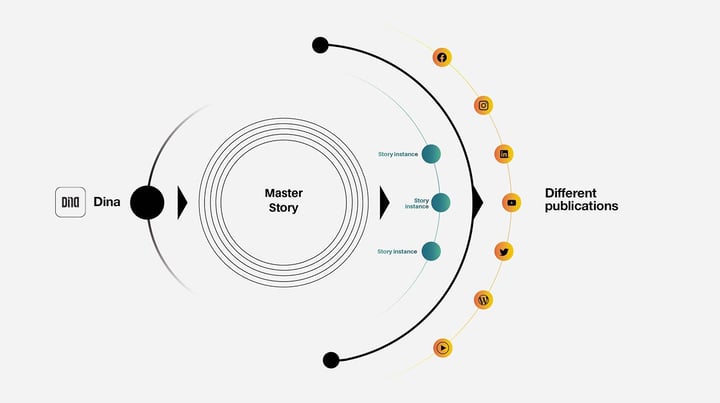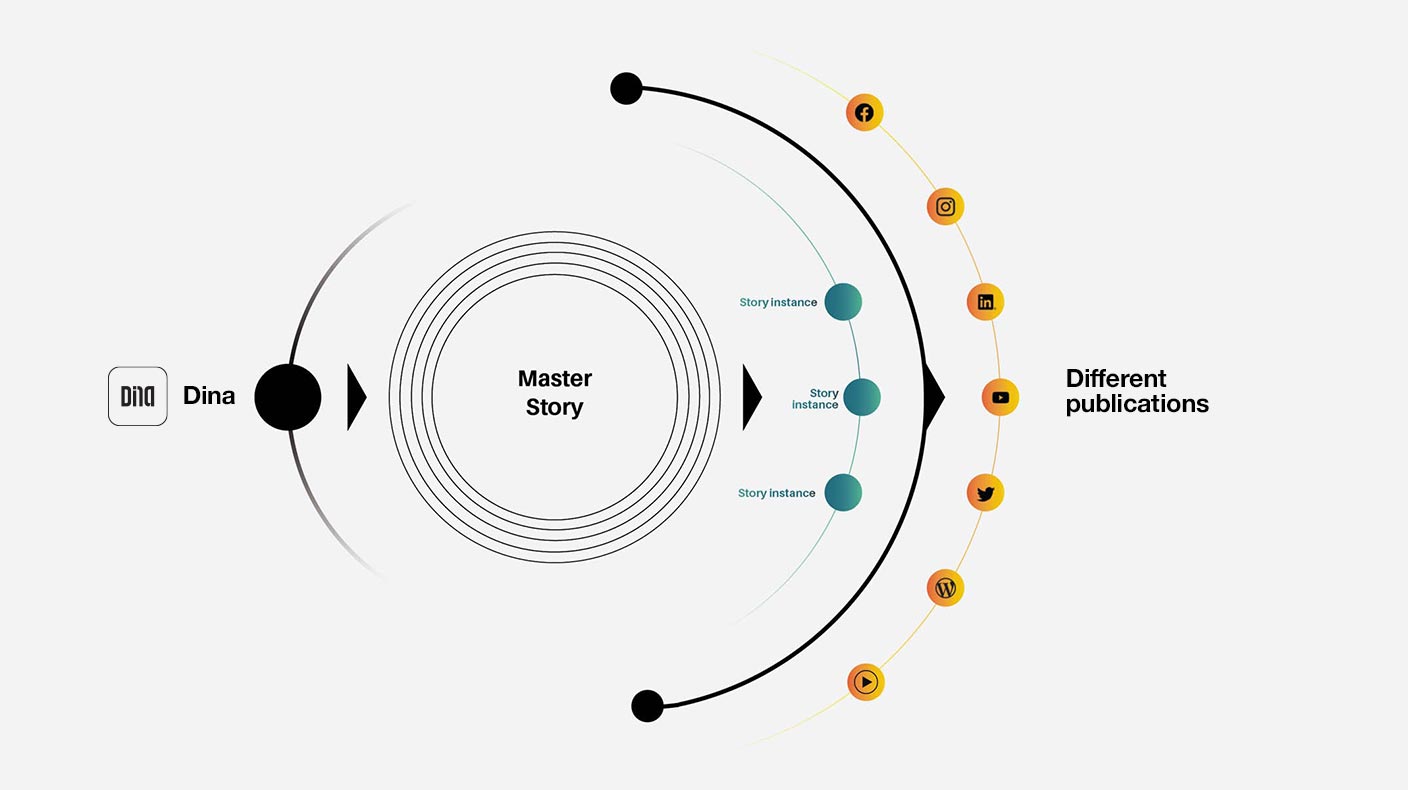Journalism has always been subject to technical developments and constraints. This has been the case since the beginning, with print technology constraining newspaper journalists and broadcast technology dictating what was seen on a viewer’s TV set. Now the invention of the smartphone pushes newsrooms to deliver in an increasingly fast-paced manner and to multiple destinations at once.
From one broadcast a day to continuous broadcast on multiple platforms
Since the first television news broadcast in the 1950s until the birth of the Internet in the 1990s, newsrooms worldwide have organised themselves around linear workflows. Most broadcast operations started with radio, later adding one television channel. All journalists and producers worked to a singular timeline with one or two broadcasts a day.
Broadcasters kept TV and radio production in separate silos and systems, with reporters and producers locked in these silos with little crossover. As a result, the tools built for the job were very much in support of a single output and often assumed all users were working to the same deadline. When broadcasters grew with the evolution of new publishing platforms, they added new departments, and additional silos formed around each output in terms of editorial teams and, in some cases, also for engineering teams.
New requirements have caused broadcast teams to piggyback tools on top of one another, creating many process layers. Traditional newsroom technology providers have taken an evolutionary approach rather than a revolutionary approach to development and still function, assuming that linear workflows come first.
The flip to digital
Since the end of the “golden age of television”, which lasted 30-odd years up to the mid-2000s, we have seen the growing dominance of digital. When television first began, it was initially considered the poor cousin of radio. Until very recently, digital was seen in much the same light, with television broadcasts taking a leading position.
Digital was a place news organisations had to be, but no one really knew where it was heading, how to monetise it, or how to accommodate it in the technology stack.
In the past decade, we have seen the emphasis flip. Digital news sources now often lead the way, and linear broadcast enriches and adds to the digital offering. We have for a long time been saying that television is dead. However, perhaps it’s fairer to say that appointment television is dead, as digital news still generally relies heavily on linear broadcast for content.
Since the traditional vendors didn't deliver the tools needed, digital newsrooms worldwide had to look outside broadcast for appropriate tools. Most of these tools were not designed for news workflows, and have been spliced into the newsroom to fill functionality gaps, often by users and sometimes even without the knowledge of broadcast engineering teams. Knowledge about how to find and operate tools is usually held with individuals rather than in the broader business, and the tools are not built into formal day-to-day processes.
Not even the largest broadcast technology providers have followed up on simplifying the process and giving control and oversight back to engineering teams. Technology departments are losing control over the technology because they cannot find and provide the modern tools required, resulting in users finding tools for themselves in a disorganised and fragmented way. Many newsrooms have ended up with a messy technology stack simply because the technology that runs the newsroom has not kept up with the speed of the digital revolution.
For users, this means that they spend a large part of their working day on process rather than journalism. These processes are often cumbersome and provide no opportunity for collaboration.
There has been little development in journalists’ tools for seamless delivery to all the platforms that news is consumed on today.
The story-centric cloud newsroom
This blog post is a chapter of the Ebook “The principles of Story-centric workflows” by the co-founder of story-centric newsroom tool Dina, Mads Grønbæk, and the Managing Director of Stem Media, Emily Dawson.
Want to learn more about story-centric newsroom workflows?
Get access to the FREE Ebook “The principles of story-centric workflows”here.







